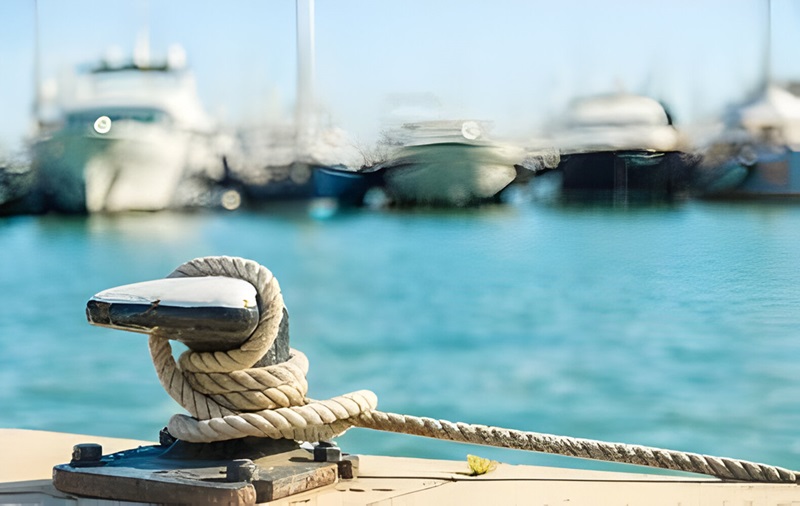The Science Behind Marine Ropes: Strength, Durability, and Performance

Ever found yourself wondering why marine ropes are exceptional, or what makes them endure harsh marine environments? Or, perhaps, the science behind these ropes piqued your curiosity. Welcome to a journey that explores the intricate world of marine ropes, their strength, durability, and the all-important performance.
In an enthralling mix of science, design, and practical application, marine ropes showcase the sheer feat of engineering, stretching from time-honored traditions to the most recent advancements in technology. We bet you will look at those ropes with a new sense of awe by the end of this trip.
As we dive deeper, we’ll explore the processes and materials that give these ropes their enviable prowess, a narrative teeming with insight and delightful discoveries. Hold on tight, as we reveal the magic behind marine ropes.
The Evolution of Marine Ropes
In understanding the ropes’ resilience, it’s only right to start from the beginning: their evolution. In its infancy, marine ropes were made of natural fibers like hemp, sisal, or cotton, due to their robustness and accessibility. But the advent of technology and more scientific discoveries introduced synthetic fibers, reshaping the nature and function of marine ropes.
Polyester, nylon, and polypropylene, among others, have proven to offer superior strength, durability, and performance. Their application ranges from docking and towing to fishing and marine exploration.
These materials, in harmony with advanced manufacturing techniques, result in ropes that are lightweight yet incredibly strong, resistant to water absorption and UV radiation. But each fiber comes with pros and cons, a testament to the wide array of marine applications.
The Strength of Marine Ropes
But what contributes to the undeniable strength of these ropes? A specific type of intertwining, also known as braiding, avails the necessary strength to the ropes. From simple three-strand twists to 12-strand braids and complex double-braid structures, each serves a unique purpose.
Careful consideration is given to the denier (fiber thickness) and construction type to achieve the perfect balance of strength and flexibility. Beneath the seemingly simple exterior lies a marvel of engineering!
Another integral part to this equation is tension fatigue. Marine ropes are designed to withstand repeated tension loads without degradation, making them a coveted asset in on-sea applications.
Superior Durability
Most prevalently, synthetic fibers in marine ropes face numerous adversities. From harsh weather conditions, continual water exposure, sun rays, and microbial infections, the list is lengthy.
Thanks to the ongoing research and development, today’s marine ropes exhibit exceptional durability. The application of specific coatings and treatments further enhances their lifespan by offering resistance against the aforementioned adversities.
Coatings like UV protectants lend longevity by shielding against harmful radiation. Similarly, anti-fungal and anti-microbial treatments bar unwanted organisms that may affect rope integrity.
Performance in Different Environments
Indeed, the performance of the rope greatly depends on its destined environment. For instance, Nylon ropes are known for their exceptional shock absorption, an attribute making them suitable for docking and anchoring applications. Polypropylene ropes, the lightest amongst synthetic fibers, float on water, advantageous for fishing lines and life-saving equipment.
Each rope gets meticulously designed around its application, a testament to the value specialization brings to the marine industry.
Ensuring Responsible Production and Disposal
As we marvel at the technological and scientific accomplishments, it’s worth taking a moment to appreciate the advancements in environmentally conscious production and disposal practices.
Recycling ropes, when possible, and designing ropes with a longer life expectancy are just some of the steps taken in the right direction. As a result, the marine rope industry demonstrates its commitment to preserving the very oceans it serves.
Conclusion
Standing at the intersection of science, skill, and technology, marine ropes exhibit strength, durability, and performance of impressive proportions. From the braiding methods and fiber materials to various treatments, every detail matters in manufacturing the unassuming marine rope.
While the science and engineering propelling marine ropes are complex, one cannot ignore their simple and practical beauty. They are symbols of human innovation, enhanced continually to combat evolving marine challenges.
In harmonizing technological advancements with responsible practices, marine ropes represent not just strength, but unwavering resilience. They are the silent heroes of the marine world, performing their roles with relentless determination and unyielding might.
Here’s to the humble marine rope, which, in its strength, encapsulates a perfect blend of scientific application and respect for the environment it serves.